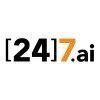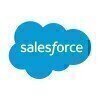
Automatic Data Processing (ADP)
Proud winner of ABECA 2025 - AmbitionBox Employee Choice Awards
Filter interviews by
Automatic Data Processing (ADP) Senior Financial Analyst Interview Questions and Answers
7 Interview questions
I will use statistical methods and trend analysis to forecast future financial performance based on previous years data.
Utilize historical financial data to identify trends and patterns
Apply statistical techniques such as regression analysis and time series analysis
Consider external factors that may impact future performance, such as market conditions or industry trends
Use forecasting models like moving averages o...
To save costs with limited money, focus on reducing unnecessary expenses, negotiating with vendors, optimizing processes, and increasing efficiency.
Identify and eliminate unnecessary expenses
Negotiate with vendors for better pricing or discounts
Optimize processes to reduce waste and improve productivity
Increase efficiency by streamlining operations and automating tasks
Forecast is a prediction of future financial outcomes, while budget is a plan for managing financial resources.
Forecast is an estimate of future financial performance based on current trends and data.
Budget is a detailed financial plan for a specific period, outlining expected revenues and expenses.
Forecasting helps in setting realistic financial goals, while budgeting helps in allocating resources efficiently.
For...
I prioritize tasks based on urgency and importance, and use time management techniques to ensure all deadlines are met.
I create a to-do list and prioritize tasks based on deadlines and importance
I break down larger tasks into smaller, manageable ones
I use time management techniques such as the Pomodoro technique to stay focused and productive
I communicate with stakeholders to manage expectations and ensure deadlin...
SUMIF is used to sum values based on a single criteria, while COUNTIF is used to count values based on a single criteria.
SUMIF is used to sum values in a range that meet a certain criteria.
COUNTIF is used to count the number of cells in a range that meet a certain criteria.
Example: =SUMIF(A1:A10, ">10") will sum all values in the range A1:A10 that are greater than 10.
Example: =COUNTIF(B1:B10, "=Red") will count th...
FP&A stands for Financial Planning and Analysis. It involves analyzing financial data to provide insights and recommendations for business decisions.
FP&A involves budgeting, forecasting, and financial analysis
Financial ratios are used to analyze financial performance and health
Case studies are used to apply financial analysis to real-world scenarios
FP&A helps businesses make informed decisions based on financial d...
Types of employees cost include salary, benefits, training, turnover, and productivity losses.
Salary: the amount paid to employees for their work
Benefits: additional perks provided to employees such as healthcare, retirement plans, and paid time off
Training: costs associated with training new employees or providing ongoing professional development
Turnover: expenses related to hiring and onboarding new employees du...
Automatic Data Processing (ADP) Senior Financial Analyst Interview Experiences
3 interviews found
I applied via Naukri.com and was interviewed in Aug 2024. There were 3 interview rounds.
(2 Questions)
- Q1. Basic question about my work profile and jd description.
- Q2. Expected salary and interview scheduled
(4 Questions)
- Q1. Difference between sumif and coutif
- Ans.
SUMIF is used to sum values based on a single criteria, while COUNTIF is used to count values based on a single criteria.
SUMIF is used to sum values in a range that meet a certain criteria.
COUNTIF is used to count the number of cells in a range that meet a certain criteria.
Example: =SUMIF(A1:A10, ">10") will sum all values in the range A1:A10 that are greater than 10.
Example: =COUNTIF(B1:B10, "=Red") will count the num...
- Q2. Difference between forecast and budget
- Ans.
Forecast is a prediction of future financial outcomes, while budget is a plan for managing financial resources.
Forecast is an estimate of future financial performance based on current trends and data.
Budget is a detailed financial plan for a specific period, outlining expected revenues and expenses.
Forecasting helps in setting realistic financial goals, while budgeting helps in allocating resources efficiently.
Forecast...
- Q3. Variance analysis reason and trend analysis
- Q4. How will you do forecasting based on previous years data
- Ans.
I will use statistical methods and trend analysis to forecast future financial performance based on previous years data.
Utilize historical financial data to identify trends and patterns
Apply statistical techniques such as regression analysis and time series analysis
Consider external factors that may impact future performance, such as market conditions or industry trends
Use forecasting models like moving averages or exp...
(2 Questions)
- Q1. 5 types of employees cost
- Ans.
Types of employees cost include salary, benefits, training, turnover, and productivity losses.
Salary: the amount paid to employees for their work
Benefits: additional perks provided to employees such as healthcare, retirement plans, and paid time off
Training: costs associated with training new employees or providing ongoing professional development
Turnover: expenses related to hiring and onboarding new employees due to ...
- Q2. How to save cost for the company if given limited money
- Ans.
To save costs with limited money, focus on reducing unnecessary expenses, negotiating with vendors, optimizing processes, and increasing efficiency.
Identify and eliminate unnecessary expenses
Negotiate with vendors for better pricing or discounts
Optimize processes to reduce waste and improve productivity
Increase efficiency by streamlining operations and automating tasks
Skills evaluated in this interview
I applied via Referral and was interviewed before Jul 2021. There were 3 interview rounds.
(1 Question)
- Q1. Experience, background, salary expectations
(1 Question)
- Q1. What is FP&A? Financial Ratios and Case study
- Ans.
FP&A stands for Financial Planning and Analysis. It involves analyzing financial data to provide insights and recommendations for business decisions.
FP&A involves budgeting, forecasting, and financial analysis
Financial ratios are used to analyze financial performance and health
Case studies are used to apply financial analysis to real-world scenarios
FP&A helps businesses make informed decisions based on financial data
Ex...
(1 Question)
- Q1. What do you expect from this role?
Interview Preparation Tips
Interview Questionnaire
1 Question
- Q1. How do you manage multiple deadlines
- Ans.
I prioritize tasks based on urgency and importance, and use time management techniques to ensure all deadlines are met.
I create a to-do list and prioritize tasks based on deadlines and importance
I break down larger tasks into smaller, manageable ones
I use time management techniques such as the Pomodoro technique to stay focused and productive
I communicate with stakeholders to manage expectations and ensure deadlines ar...
Interview Preparation Tips
Top trending discussions






Interview questions from similar companies

I applied via Job Portal and was interviewed in Dec 2019. There were 3 interview rounds.
Interview Questionnaire
1 Question
- Q1. Explain the rating process from com to Bip
- Ans.
The rating process from com to Bip involves evaluating a company's creditworthiness and assigning a rating based on various factors.
The process starts with gathering information about the company's financials, operations, and industry.
The information is analyzed to assess the company's credit risk and financial stability.
Based on the analysis, a rating is assigned to the company, which ranges from AAA to D.
The rating a...
Interview Preparation Tips

Interview Questionnaire
5 Questions
- Q1. Questions on Sales cycle and Oracle products like HCM, ERP, EPM and other cloud services
- Q2. Questions on Current IT Trends
- Q3. Questions on Financial Analytics (Profitability ratios and financial modeling) and product bench marking approach
- Q4. Questions on CLoud, IoT, Blockchain Trends and applications across industries
- Q5. Face to Face questions - Guesstimate and Case Study, 2 subsequent interviews on Case Study with Manager and Director

Interview Questionnaire
1 Question
- Q1. About financial analysts

I applied via Recruitment Consultant and was interviewed before Jul 2020. There were 3 interview rounds.
Interview Questionnaire
2 Questions
- Q1. Explain agile ceremonies.
- Q2. Situatiinal based
Interview Preparation Tips
Skills evaluated in this interview

I applied via Naukri.com and was interviewed before Jan 2021. There was 1 interview round.
Interview Questionnaire
2 Questions
- Q1. Explain urself
- Ans.
I am a detail-oriented business analyst with strong analytical skills and experience in data analysis and project management.
Experienced in conducting market research and identifying business opportunities
Skilled in data analysis and visualization using tools like Excel and Tableau
Proficient in project management methodologies like Agile and Waterfall
Strong communication and interpersonal skills for effective collabora...
- Q2. I explained
Interview Preparation Tips

Business Analyst Interview Questions & Answers
Microsoft Corporationposted on 10 May 2021
I applied via Monster and was interviewed in Nov 2020. There were 4 interview rounds.
Interview Questionnaire
2 Questions
- Q1. Where do I work?
- Q2. What is my salary?
Interview Preparation Tips

Interview Questionnaire
1 Question
- Q1. What is your greatest achievement elaborate
Automatic Data Processing (ADP) Interview FAQs
Tell us how to improve this page.
Automatic Data Processing (ADP) Interviews By Designations
- Automatic Data Processing (ADP) Member Technical Interview Questions
- Automatic Data Processing (ADP) Senior Member Technical Interview Questions
- Automatic Data Processing (ADP) Senior Process Associate Interview Questions
- Automatic Data Processing (ADP) Process Associate Interview Questions
- Automatic Data Processing (ADP) Analyst Interview Questions
- Automatic Data Processing (ADP) Consultant Interview Questions
- Automatic Data Processing (ADP) Business Analyst Interview Questions
- Automatic Data Processing (ADP) Member Technical Staff Interview Questions
- Show more
Overall Interview Experience Rating
based on 1 interview experience
Difficulty level
Duration
Interview Questions from Similar Companies

Automatic Data Processing (ADP) Senior Financial Analyst Reviews and Ratings
based on 17 reviews
Rating in categories
|
Senior Member Technical
1.6k
salaries
| ₹8.5 L/yr - ₹22.5 L/yr |
|
Senior Process Associate
1.4k
salaries
| ₹3.5 L/yr - ₹8.3 L/yr |
|
Analyst
1.4k
salaries
| ₹5 L/yr - ₹11 L/yr |
|
Consultant
1.4k
salaries
| ₹19.1 L/yr - ₹32 L/yr |
|
Member Technical
926
salaries
| ₹4.7 L/yr - ₹10 L/yr |

Oracle

Amdocs

Carelon Global Solutions

24/7 Customer
- Home >
- Interviews >
- Automatic Data Processing (ADP) Interview Questions













